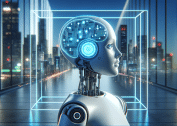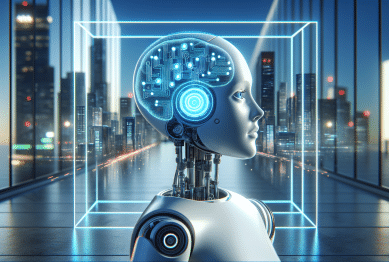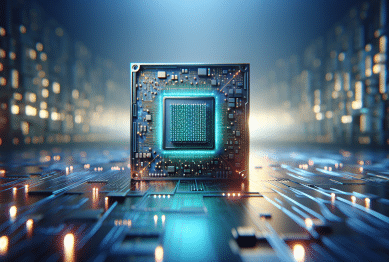Artificial intelligence is quietly transforming the way people live, work, and connect. This article offers an in-depth guide to how AI-powered solutions, from smartphone assistants to healthcare diagnostics, are shaping daily experiences. Get ready to explore the unseen world of intelligent technology all around you.
Understanding AI and Its Everyday Impact
Artificial intelligence, or AI, refers to systems that mimic human cognitive functions such as learning, reasoning, and problem-solving. Although often thought of as futuristic, AI-powered technology is already embedded in daily routines. From voice assistants to smart navigation, AI shapes how individuals gather information, make choices, and interact with devices. Automated algorithms filter spam, recommend content, and enable seamless experiences in environments from homes to workplaces.
Behind many seemingly simple functions lies complex machine learning. When a search engine guesses what is being typed before it’s finished, it’s an AI at work. Modern AI, driven by deep learning networks, adapts and improves as it encounters new data. Over time, systems learn to recognize speech patterns, understand natural language, and even detect anomalies in vast datasets, empowering smarter recommendations and efficient automation.
Society’s increasing reliance on interconnected technology continues to fuel AI’s expansion. Smart homes are managed by intelligent hubs that adapt to preferences and routines automatically. Social media feeds prioritize updates based on behavioral cues identified by AI algorithms. The widespread yet often invisible integration of artificial intelligence enhances convenience, personalization, and predictive power in daily life (Source: https://www.nist.gov/artificial-intelligence).
AI Assistants: Voice Commands and Beyond
Virtual assistants such as Siri, Google Assistant, and Alexa are prime examples of AI blending into daily life. They listen, interpret, and fulfill spoken requests, making tasks like setting reminders, playing music, or searching for information almost effortless. These assistants utilize natural language processing to comprehend context, enabling them to grow smarter with each interaction.
In many homes, smart speakers act as central control panels, linking other devices such as thermostats, lights, and security systems. By learning usage patterns, these AI systems help optimize energy consumption and boost convenience. They even provide hands-free access to emergency information or personalized updates, making technology feel like a helpful companion rather than a tool.
The power of AI-driven assistants extends to mobile phones and desktops as well. Whether it’s dictating texts, organizing calendars, or translating languages in real time, these assistants enable greater productivity and accessibility. As language models evolve, their ability to provide meaningful guidance and seamless interaction continues to accelerate (Source: https://www.ibm.com/topics/virtual-assistant).
AI in Healthcare: Unseen Diagnostics and Early Detection
Healthcare has rapidly adopted AI-powered solutions to support diagnosis, monitoring, and research. Imaging tools now rely on deep learning to interpret X-rays, MRIs, or CT scans, often spotting patterns a human eye could miss. This enhances early detection of illnesses such as cancer, sometimes leading to improved outcomes and more personalized treatments.
Wearable devices, equipped with sensors and AI algorithms, track metrics like heart rate or sleep quality and can flag potential health concerns. These technologies help users and professionals monitor chronic conditions or lifestyle habits, promoting preventive care. By aggregating real-time data, AI enhances not just clinical diagnostics but also personal wellness routines.
AI’s presence in telemedicine leverages chatbots and virtual diagnosis to answer health questions or triage symptoms remotely. While not a replacement for personalized medical care, these tools expand access to helpful information and support, especially in underserved regions or during times of high demand (Source: https://www.cdc.gov/telehealth/ai/index.html).
Transportation and Mobility Enhanced by AI
Modern transportation networks heavily depend on artificial intelligence. Navigation apps, for example, analyze live traffic data to offer alternate routes, predict delays, and estimate arrival times with surprising accuracy. This is all powered by AI algorithms capable of quickly processing huge volumes of dynamic information.
Public transportation systems use predictive analytics to manage schedules and passenger loads. AI tools can forecast demand, adjust service frequency, and communicate changes, improving efficiency for both providers and commuters. In vehicles, advanced driver-assistance systems (ADAS) utilize machine vision and AI for lane detection, emergency braking, and adaptive cruise control, laying the groundwork for safer roads.
Self-driving technologies continue to make headlines. While fully autonomous cars are not yet mainstream, many semi-autonomous features already rely on AI learning models. These systems interpret cameras and sensors, recognizing obstacles and making real-time driving decisions to reduce the risk of accidents. This evolution highlights the growing influence of AI beyond digital spaces and into literal highways (Source: https://www.transportation.gov/AV).
Personalized Experiences: Shopping, Streaming, and More
From online shopping to video streaming, AI tailors recommendations based on browsing and consumption habits. E-commerce platforms analyze previous purchases, searches, and reviews to suggest relevant products. This makes discovery easier and often introduces choices consumers may not have considered without AI intervention.
Streaming giants like Netflix and Spotify use algorithms to curate playlists or suggested shows, generating millions of individualized experiences. By analyzing patterns such as watch time and skip frequency, AI refines selections for maximum engagement. This same logic powers news feeds and social platforms, presenting stories or updates that align with each user’s interests and engagement style.
Even online banking and customer service have embraced AI-powered chatbots. These virtual agents address queries, guide users through transactions, and troubleshoot common problems. With advanced natural language understanding, they can often solve tasks without human intervention, reducing wait times and enhancing satisfaction (Source: https://www.nature.com/articles/d41586-018-05469-8).
AI’s Role in Education and Learning
Educational environments have begun integrating AI to customize learning experiences, monitor student progress, and automate administrative tasks. Adaptive learning platforms reshape lessons based on performance, helping students receive targeted guidance where it’s needed. Intelligent tutoring systems assess responses and offer explanations, enhancing comprehension without added pressure.
AI-driven automation streamlines grading, scheduling, and communication tasks, freeing educators to focus more on creative teaching and interpersonal support. For language learners, AI enables interactive chatbots and speech recognition apps that offer practice and feedback anytime. This instant support reduces barriers and increases access to education, regardless of geography or learning style.
Remote and blended learning environments benefit particularly from AI analytics, which track engagement and measure outcomes. By identifying where students struggle, educators can respond quickly with interventions or adjust curricula. The potential to personalize learning at scale is reshaping academic experiences for learners around the world (Source: https://ed.stanford.edu/news/ai-classroom).
References
1. National Institute of Standards and Technology. (n.d.). Artificial Intelligence. Retrieved from https://www.nist.gov/artificial-intelligence
2. IBM. (n.d.). Virtual Assistant. Retrieved from https://www.ibm.com/topics/virtual-assistant
3. Centers for Disease Control and Prevention. (n.d.). Artificial Intelligence in Telehealth. Retrieved from https://www.cdc.gov/telehealth/ai/index.html
4. U.S. Department of Transportation. (n.d.). Automated Vehicles. Retrieved from https://www.transportation.gov/AV
5. Nature. (2018). How Artificial Intelligence Is Changing Drug Discovery. Retrieved from https://www.nature.com/articles/d41586-018-05469-8
6. Stanford Graduate School of Education. (n.d.). The AI Classroom. Retrieved from https://ed.stanford.edu/news/ai-classroom









